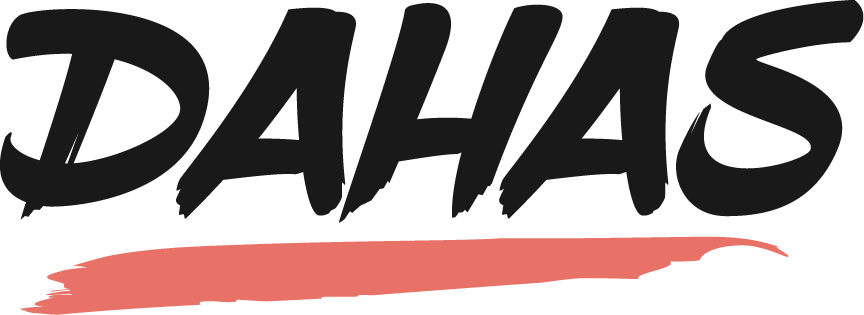Drug-related Killings Database
Excerpt
Developing a method for recording drug-related killings
(This is an excerpt from a case study written by the authors for the project, “Violence, Human Rights, and Democracy in the Philippines.” The project is a joint undertaking by the Third World Studies Center, College of Social Sciences and Philosophy, University of the Philippines Diliman and the Department of Conflict and Development Studies, Ghent University.)
UPDATE: Since March 15, 2021, the database has no longer solely relied on the Philippine Daily Inquirer as the source of its data. It has since expanded to include reports about drug-related killings from various news outlets.
Due to the sudden rise in the number of killings, various institutions—ranging from media platforms and nongovernment organizations (NGOs) to government agencies, and most recently, the academe—saw the need to monitor and record the number of drug-related deaths in the country. One of the first to do so was the news website Inquirer. On July 7, 2016, merely seven days into the new administration, it published a list of “casualties in the Duterte administration’s war on crime”—this became the Kill List. Despite their attempt to record victims of the “war on crime,” the editor’s note prefacing the list stated that “most of those killed were identified by the police as tulak (suspected drug dealers or pushers) in particular. An entry in the list generally included a person’s name and alias, the time of his/her death, the location of the incident, the assailants responsible for the killing, and other relevant details, such as inclusion in a drug watchlist. These entries were grouped according to the dates of the incidents, which were then arranged from the most recent to the least. As of February 16, 2017, Inquirer’s Kill List had recorded a total of 2,174 deaths since May 10, 2016—the day after the national elections. On October 8, 2016, Vera Files used the Inquirer’s data to create graphs and infographics summarizing the killings across a number of variables. Excluding entries with incomplete details, they were able to analyze 1,153 out of the then 1,213 recorded cases. They found that most of the victims were males and suspected drug pushers that were killed by the police.
A week after the release of the Kill List, the ABS–CBN Investigative and Research Group also published their own attempt to monitor the killings using news reports and press releases of the PNP and the Philippine Drug Enforcement Agency (PDEA)—this time focusing exclusively on drug-related deaths. The list itself only reports the names and aliases of the victims and the locations and dates of the incidents, but unlike the Kill List, ABS–CBN’s death toll also includes an interactive map and charts summarizing the number of killings according to month, province, region, and assailant type. From May 10, 2016 to July 2, 2019, the group had recorded a total of 5,997 drug war deaths.
In spite of the media’s attempts to generate reliable casualty counts, the real number remained elusive, as law enforcement agencies, those at the frontlines of the war on drugs, kept their data under wraps. On May 2, 2017, amid debates about the actual death toll, the then-newly created Inter-Agency Committee on Anti-Illegal Drugs (ICAD)—consisting of various government agencies led by PDEA—organized a forum called “#RealNumbersPH” in an effort to supposedly “clarify the confusing and divisive numbers in the government’s campaign [against illegal drugs],” according to forum host and political science professor Antonio Contreras (quoted in Rappler 2017). In their coverage of this event, Rappler noted that “the need to ‘clarify’ presumably stemmed from a video message of Vice President Leni Robredo in mid-March 2017,” wherein she claimed that, as of then, 7,000 people had been summarily executed—a figure vehemently denied by the PNP. Based on data from the police, 2,717 drug suspects were killed in legitimate antidrug operations from July 1, 2016 to April 23, 2017. As of the end of March 2017, another 1,847 cases out of the 9,432 “homicide cases under investigation” (HCUI) were classified as “drug-related”—bringing the total number of confirmed drug-related deaths to 4,564 less than a year into the Duterte administration (Gavilan 2017; Rappler 2017).
Following that forum, the #RealNumbersPH initiative became an ongoing endeavor. A Facebook page with the same name was set up, and on it, updates on figures that have to do with the war on drugs are regularly posted. As of this writing, their latest update claimed that a total of 5,526 people have been killed in antidrug operations during the first half of the administration, from July 1, 2016 to June 30, 2019. HCUI and drug-related deaths perpetrated by unidentified assailants were not among the reported figures, but, in a television interview with PNP spokesperson Col. Bernard Banac on March 4, 2019, he said that the number of “deaths under investigation” (DUI), a term used interchangeably with HCUI, had reached 29,000—with at least 3,062 linked to illegal drugs (Tupas 2019).
With #RealNumbersPH, the government sought to belie casualty counts they regarded as fake, bloated, and misleading (Santos and Ebbighausen 2018). This intention was made clear by the caption to the Philippine Television Network’s (PTV) livestream of the May 2017 forum: “Do not be fooled by Fake Numbers. Know the Real Numbers.” Yet, contrary to their goal of providing the public with “real” and reliable information on the drug war, the figures released were found to be too general and rife with inconsistencies (Vera Files 2018). According to the Philippine Center for Investigative Journalism (PCIJ), for instance, the #RealNumbersPH death toll as of last May 23, 2017, (3,027) was greater than those provided by both the PNP Directorate for Operations (2,962) and the PNP Double Barrel Secretariat (3,002) for the same time period. The discrepancies in the numbers of antidrug operations conducted, suspects arrested, and individuals who surrendered reported by #RealNumbersPH and the two PNP units were found to be even greater, with the former presenting figures that were thousands more than those sourced from the PNP.
Apart from law enforcement agencies and the media, NGOs and unaffiliated private individuals have also attempted to gather information on and map out victims of Duterte’s war on drugs. The Foundation for Media Alternatives, in partnership with the Association for Progressive Communications and the Swedish International Development Cooperation Agency, recorded a total of 3,400 drug war victims from June 30, 2016 to February 19, 2018, and plotted them on a map in their website called Ang Pangako (The Promise), which the Foundation for Media Alternatives described as “an online repository of information on the aftereffects of the campaign against illegal drugs.” A group of concerned individuals also sought to make a compilation of victims of the drug war. Like the Foundation for Media Alternatives, they used mostly media reports to gather information on the victims, which they then used to set up individual profiles of the dead in the form of “an online memorial” on their website, Paalam (Goodbye) (www.paalam.org). In accordance with their goal of countering the dehumanization that they feared may come with reporting casualties as mere numbers and statistics, they did not indicate the total number of victims that they were able to record.
Seeing the lack of individual-level data to support the numerous varying death tolls provided by both government and nongovernment organizations, the Ateneo School of Government of the Ateneo de Manila University sought to create the “most comprehensive, available victim-level list of killings in the Duterte administration’s antidrug campaign”—marking the first initiative from the academic sector to record deaths resulting from Duterte’s war on drugs. With De La Salle University, the University of the Philippines Diliman, and the Stabile Center for Investigative Journalism at Columbia University, the Ateneo School of Government formed the Drug Archive—a research consortium that aims to conduct “multidisciplinary and evidence-based research on the antidrug campaign in the Philippines.” The consortium developed a database of drug-related killings that was first revealed to the public in a forum held at the Ateneo de Manila University in June 2018 (Talabong 2018; detailed overview in David et al. 2018). Using as much information as they could gather from media reports and other publicly available sources, the Drug Archive team accounted for cases that conformed to the inclusion criteria that they had set, and encoded information from those cases across an unspecified number of variables related to the victims and the incidents in question. In the second forum organized by the team in April 2019, they revealed that they had recorded a total of 7,029 drug-related deaths from May 10, 2016 to December 31, 2018.
With the above death-monitoring efforts, it is clear that coming up with an accurate number of drug-related deaths is a tall order. This difficulty stems largely from a lack of transparency on the end of law enforcement agencies and partly from methodological problems encountered by those who have attempted to count the dead. The opaqueness of the PNP’s data is no longer new information; the government has repeatedly refused to hand over documentation of drug war cases to probing parties for reasons related to “national security” (Gavilan 2018; Torres-Tupas 2019). Furthermore, the social cards posted on the Facebook page of #RealNumbersPH only report general and oftentimes inconsistent summary figures. Since the launch of the antidrug campaign, the police have also created confusing and overlapping categories to describe deaths occurring outside the confines of police operations—DUI in August 2016, which evolved into “murder cases under investigation” (MCUI) in January 2017, and later into HCUI in March 2017 (Santos and Ebbighausen 2018)—which are not reported as part of #RealNumbersPH. Considering that the PNP and other law enforcement agencies at the forefront of the drug war serve as the primary sources of information of those who have attempted to monitor the killings, this lack of transparency threatens the validity of the latter’s data and analyses. Due to the public’s restricted access to police data, concerned organizations and individuals have mostly depended on media reports to track the killings. However, the media itself largely depend on limited police reports (Santos and Ebbighausen 2018) and have, on most occasions, merely echoed what law enforcers have said (CMFR 2019). They also suffer from metropolitan bias, with killings occurring in far-flung areas of the country being less likely to reach mainstream news—a limitation that was acknowledged by the Drug Archive team as well.
Aside from these issues with the sources, there also seems to be a problem in defining what exactly qualifies as a “drug-related death.” This has resulted in the conflation of the motives behind the killings. For example, the Inquirer’s Kill List and Paalam both took note of cases that had no clear links to illegal drugs; the former recorded victims of the “war on crime” in general while the latter included “unexplained murders that have unclear motives but are ‘copycat’ by modus operandi of drug-related killings.” Yet, when Vera Files analyzed the Kill List, this distinction was not pointed out, and their findings were presented as an analysis of the “war on drugs.” The government itself appears to be confused as to the real number and nature of the deaths. After repeatedly claiming that not all deaths under investigation are related to drugs (Cudis 2019), they then included the 16,355 HCUI as of the end of September 2017 in the “#RealNumbers” section of the “Fighting Illegal Drugs” chapter of the president’s 2017 year-end accomplishment report (Vera Files 2019). In a resolution released April 2018, the Supreme Court questioned both the high casualty count and the fact that it was included in the administration’s accomplishment report, which they warned “. . . may lead to the inference that these are state-sponsored killings” (Supreme Court 2018, 46; specifically GR 234359). During a press conference in July 2019, Communications Assistant Secretary Marie Rafael-Banaag dismissed this inclusion of HCUI as a mere “copy and paste” gaffe committed by whoever prepared the president’s report, reiterating that “HCUIs are not at all related to the war on drugs” (quoted in Tordesillas 2019). Moments later, however, she contradicted herself by saying that the case of Kian de los Santos, the 17-year-old boy killed in Caloocan City under the guise of a legitimate antidrug police operation, was classified under the same category supposedly unrelated to the drug war (Tordesillas 2019).
The inconsistent use of terms and the lack of a clear set of definitions may account for the great disparity in the death toll estimates of concerned parties. Whereas the government does not report HCUI or DUI that are linked to illegal drugs in its #RealNumbersPH updates, some casualty counts include all deaths under those categories in theirs—thereby generating numbers that are tens of thousands apart. This was also Vera Files’s verdict when they fact-checked the vice president’s claim that 7,000 people had been summarily executed: “While it’s true that more than 8,000 have been killed since President Rodrigo Duterte waged a bloody war on drugs, not all these deaths are drug-related” (Vera Files 2017). This is not to say that deaths that have nothing to do with illegal drugs are not worth our attention. There is no doubt that Duterte’s “war on drugs” has fostered a culture of violence and impunity that has seen an alarming increase in the number of unresolved killings—regardless of drug link—and that, in itself, merits public attention and outrage. However, there is a need to probe these killings in a methodological manner so as to not cause even more confusion among a people already bombarded with misinformation on a near-daily basis. This is what the Violence, Human Rights, and Democracy in the Philippines (VHRD) project of the Third World Studies Center of the University of the Philippines Diliman, in partnership with Ghent University and the University of Antwerp, sought to do in developing a method for recording the victims of the antidrug campaign.

Results
Infographics

Timeline of drug-related killings
Victims of drug-related killings dramatically increased at the onset of war against drugs of the Duterte administration. To show the increase in figures, we also recorded the reported drug-related killings during the Aquino administration.

Heatmap of drug-related killings
Drug-related killings in the Philippines were recorded and mapped out to identify the places and cities where most number of operations occurred.

Drug involvement: users, pushers and high profile targets
In this section, we try to identify the drug involvement of the victims. How many users were killed? How many were pushers? How many drug lords and high profile targets were killed?
READ MORE
Individual stories of those who were killed
Who Were They?




